How to use Hypnosis to enjoy flying
Despite commercial aviation being safer now that at any time in the past, many people are still nervous about flying. Symptoms can range from a general feeling of unease a few days before flying, to outright panic and an inability to set foot in an airport.
A lot of flight-related anxiety is as a result of not understanding what is actually happening on an aircraft, or as a result of some previous experience that felt uncomfortable.
This short blog should help to set your mind at rest that whenever you fly, everything is under control.
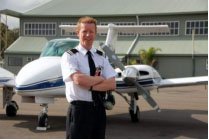 I’m Jonathan Garside, and I guess I’m uniquely qualified to help you to be a more comfortable passenger: in addition to being a clinical hypnotherapist, I’ve also been a commercial pilot for over 25 years.
I’m Jonathan Garside, and I guess I’m uniquely qualified to help you to be a more comfortable passenger: in addition to being a clinical hypnotherapist, I’ve also been a commercial pilot for over 25 years.
With experience as a flight instructor in Sydney and a Boeing 737 pilot in Singapore, I have the training, background and intimate aircraft knowledge that will help you to feel more comfortable.
The truth is, that the safest place on earth is actually in the sky!
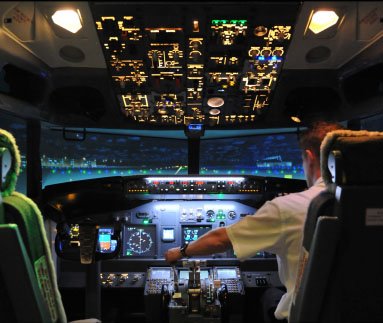
SO – HOW SAFE IS IT REALLY?
Air travel is the second-safest mode of mass transportation in the world. Second only to the common escalator.
The chances of being involved in an aircraft accident are approximately 1 in 11 million. Dr. Arnold Barnett of MIT says, “A person would have to fly on average once a day every day for 22,000 years before they would die in a U.S. commercial airplane accident according to recent accident rates” The likelihood of being in a fatal automobile accident are 1 in 5000. The most dangerous part of your flight is the drive to the airport.
The UK Civil Aviation Authority also has information on flight safety: https://www.caa.co.uk/Consumers/Guide-to-aviation/Aviation-safety/
| Pilot Training
A commercial pilot license usually takes about 2 years of full-time study to complete. Flight training academies are licensed by civil aviation authorities and must follow a very strict programme of Pilots are required to take and pass over 20 examinations, with an ultimate pass rate of 100% After initial training, they spend many hours in simulators and the classroom before they are cleared to line as second or first officers. Every 3 months they are scrupulously tested in flight simulators and undergo a rigorous medical assessment every 6 months |
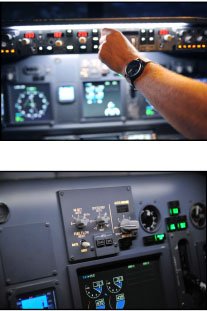
RELAX – THE AUTOPILOT IS IN CONTROL
The Autopilot is one of the most useful systems on the aircraft. It helps reduce pilot workload considerably.
Pilots control the take-off manually (although automatic throttles usually control the power produced by the engines).
At 500 feet above the ground, the pilot flying chooses lateral and vertical navigation modes on the autopilot. This means that the aircraft is now following the route which was programmed into the flight management computers before the flight.
Everything from speed, climbing and descending, turning and navigation is now being handled by the autopilot.
However, this doesn’t mean the pilots can have a nap! They have a lot to do to make sure that the fight is going as planned. This includes talking to air traffic control, monitoring weather conditions, keeping an eye on fuel consumption and flight path progress.
If low cloud or fog at the destination reduce visibility, the pilot may decide to let the autopilot land the aircraft. The instrument landing system offers extraordinary accuracy, allowing the aircraft to safely touch down at a precise spot on the runway, even if the pilots can’t see it!
Actually, every aircraft has TWO autopilots running the show to allow for redundancy. In Autoland they are coupled together for increased accuracy
KNOW YOUR AIRCRAFT – IMPORTANT SYSTEMS
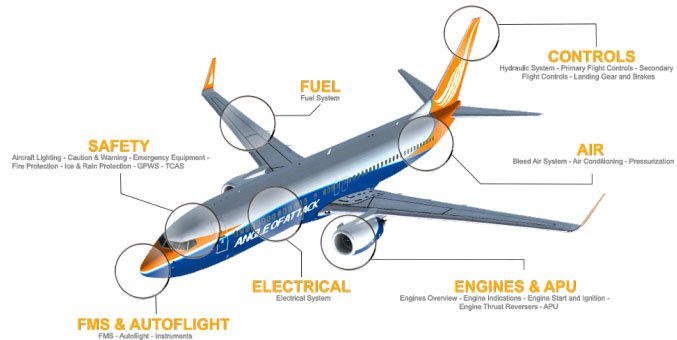
Modern aircraft are sleek and aerodynamic, with a myriad of safety features and backup systems. More of the flight is automated than ever before, allowing pilots time and space to monitor flight progress. They can see up to date information on every aircraft system. In addition, all aircraft systems are independently monitored from engineers on the ground, wherever you are in the sky!
REDUNDANCY – GIVING PASSENGERS & CREW REAL PEACE OF MIND
‘Redundancy’ isn’t generally a word one equates with ‘peace of mind’, but in aircraft it really should! With multiple systems that do the same job, if one of them fails, the other systems take over; redundancy.
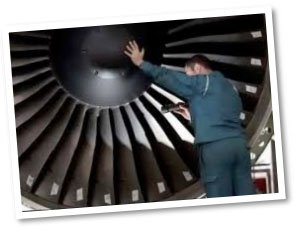 Take engines for example. Having 2 engines on an aircraft means that if one fails, the other keeps us in the air. Did you know that an aircraft can fly quite happily on one engine? Or none for that matter, they can glide for remarkable distances. However, most pilots go their entire career without experiencing an engine failure! It’s that rare!
Take engines for example. Having 2 engines on an aircraft means that if one fails, the other keeps us in the air. Did you know that an aircraft can fly quite happily on one engine? Or none for that matter, they can glide for remarkable distances. However, most pilots go their entire career without experiencing an engine failure! It’s that rare!
Engines are maintained to very strict and demanding standards, which includes x-ray examination of fan blades and constant monitoring of performance.
They are the most expensive single component of the aircraft, costing millions of dollars each, and they are amazingly powerful.
You will notice the engine noise increase shortly after landing. This is called ‘reverse thrust’ and is caused by the reversing of the engine thrust forwards to help slow the aircraft once on the runway.
Each aircraft system has redundancy built in; on the Boeing 737-800 there are 4 hydraulic systems, 6 different electrical systems, 2 navigation computers, 4 airspeed indications.
STRANGE NOISES
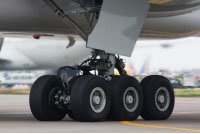 Aircraft are full of noises you may not have hard before, but they are all perfectly normal parts of the operation.
Aircraft are full of noises you may not have hard before, but they are all perfectly normal parts of the operation.
Before the engines start on the ground, you may hear some pumps whirring with a high pitched noise.
These are hydraulic pumps pressurising and are part of the startup procedure.
Perhaps you will spot that the air-conditioning turns off just before the aircraft is pushed back from the gate, this is because the air is being used to turn the engines over as part of the startup sequence.
After takeoff you may be aware of a whirring/grinding sound. This is just the landing gear being retracted into the aircraft body to make it more aerodynamic. You may notice the same sound before landing.
As we approach our destination, you may hear a rumbling sound, like driving over a cobbled road. This is caused by the deployment of speed-brakes; panels on the upper surface of the wings which stick up into the airflow to produce aerodynamic braking to slow us down.
The speed-brakes also deploy on landing, here they are known as ‘spoilers’, spoiling the wing’s ability to produce lift and keeping the aircraft firmly on the ground.
See! Not strange at all.
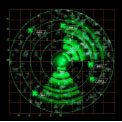 A WATCHFUL EYE
A WATCHFUL EYE
From start to finish, air traffic controllers on the ground maintain separation between aircraft. In addition, aircraft are fitted with TCAS (Traffic Collision Avoidance System) to show where other aircraft are and gives instruction to the pilots in the highly unlikely event of avoiding action being necessary. High intensity flashing lights fitted to the wingtips also increase visibility.
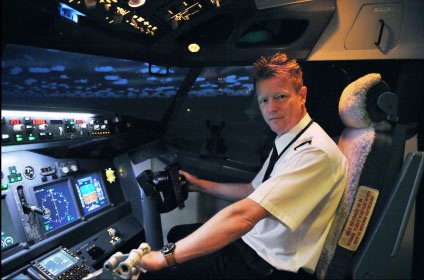
CASE STUDY
Emma Crimbie. From Singapore had a paralysing fear of flying that a course of hypnotherapy helped to cure.
“I found out about Jonathan’s unique perspective and service through reading his biography on the website. My initial thought was that he must be truly invested in what he is offering. It is rare to hear of such a metamorphosis in careers- a pilot turned hypnotist must have made this transition as he genuinely believed in what he could do to help. I felt that I was in safe hands before we even met.
In the actual session, Jonathan guided me through the hypnosis procedure with great care, at no point did I feel worried or foolish (I admit that I was more worried about the latter!) I was given an extremely useful MP3 recording for my iPhone so I could listen to it on those days I felt anxious.
I highly recommend this to anyone and everyone- those with any phobia or people who wish to unlock their more confident self. Thank you Jonathan!”
Stormy Weather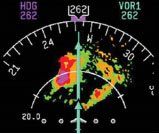 No-one likes the experience of turbulence, even pilots! So, wherever we can, we avoid it. No-one likes the experience of turbulence, even pilots! So, wherever we can, we avoid it.
Weather Radar makes it easy for the pilots to see areas of potential turbulence. Here you can see a small thunderstorm to the left of the aircraft. The view from the cockpit window shows the typical anvil-shaped head of the storm cloud. By flying the aircraft to the left of the area of intense rain, we minimise the effect of turbulence.
|
What next?
If you’d like to find out more about how hypnosis can help you to enjoy flying, have a look at our website, https://thehypnosisclinic.com/.
We offer a free initial consultation, either by a Telehealth video link or at our clinic right in the heart of London’s Regent Street.
Or call me personally for a chat on 0207 439 9089.


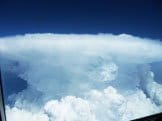 Whilst it may feel unusual, aircraft are designed to fly in bumpy weather. You may notice the wings flexing up and down as we fly along – this is perfectly normal and safe. The pilot will usually opt to fly higher or lower to avoid bad weather. This makes it a smooth ride for everyone.
Whilst it may feel unusual, aircraft are designed to fly in bumpy weather. You may notice the wings flexing up and down as we fly along – this is perfectly normal and safe. The pilot will usually opt to fly higher or lower to avoid bad weather. This makes it a smooth ride for everyone.